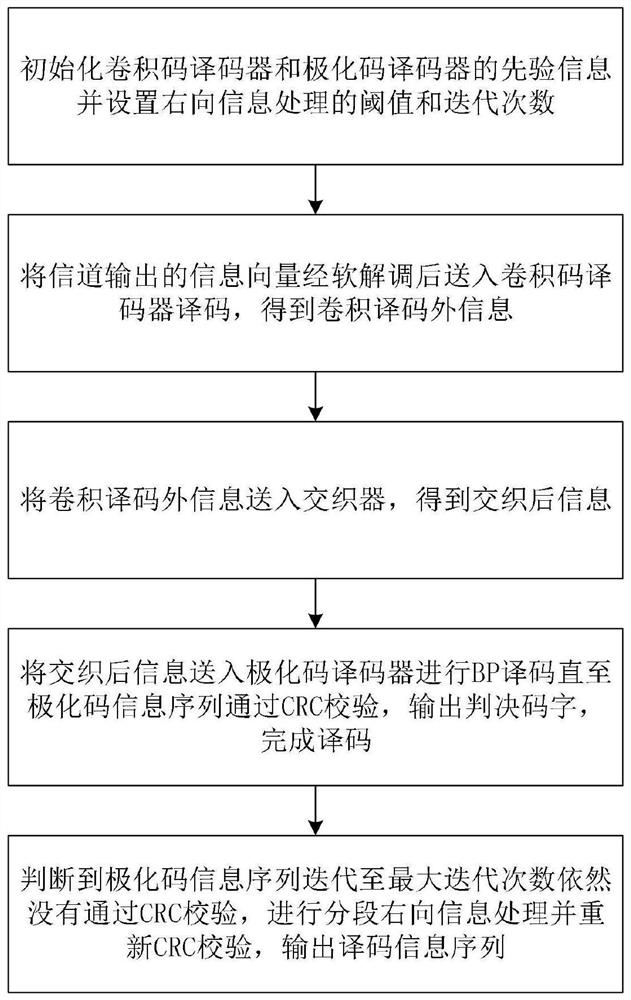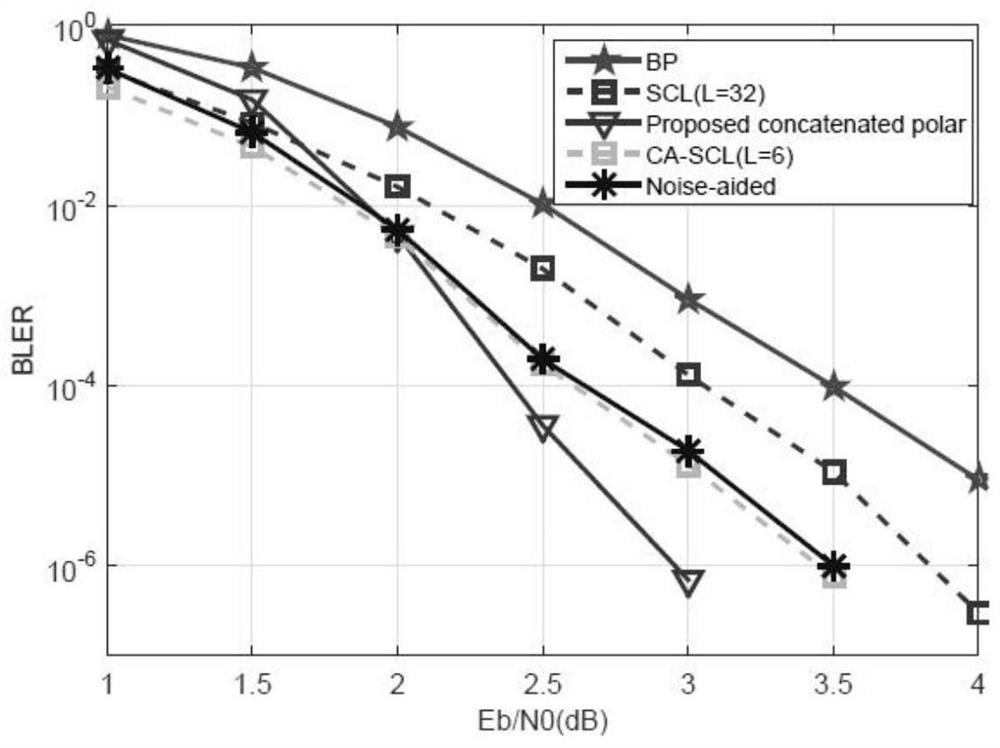Polar code decoding method based on rightward information processing and implementation device
A polar code and decoding technology, which is applied in the field of communication decoding, can solve the problems that external information cannot be effectively used, hardware overhead is increased, and the performance of BP decoding algorithm is not as good as that of SC decoding algorithm.
- Summary
- Abstract
- Description
- Claims
- Application Information
AI Technical Summary
Problems solved by technology
Method used
Image
Examples
Embodiment Construction
[0037] The present invention will be further described in detail below in conjunction with the accompanying drawings and specific embodiments. For the step numbers in the following embodiments, it is only set for the convenience of illustration and description, and the order between the steps is not limited in any way. The execution order of each step in the embodiments can be adapted according to the understanding of those skilled in the art sexual adjustment.
[0038] The BCJR decoding algorithm of the convolutional code is used as the maximum a posteriori probability decoding (MAP). When iterative decoding is used in the concatenated code, since the prior probability of the information bit changes each iteration, the MAP decoding can be made Encoders give the best performance. Considering the deficiencies of the existing polar codes and convolutional codes in the concatenated decoding design, this design improves the concatenated design method, and proposes to use the pola...
PUM
 Login to View More
Login to View More Abstract
Description
Claims
Application Information
 Login to View More
Login to View More - R&D
- Intellectual Property
- Life Sciences
- Materials
- Tech Scout
- Unparalleled Data Quality
- Higher Quality Content
- 60% Fewer Hallucinations
Browse by: Latest US Patents, China's latest patents, Technical Efficacy Thesaurus, Application Domain, Technology Topic, Popular Technical Reports.
© 2025 PatSnap. All rights reserved.Legal|Privacy policy|Modern Slavery Act Transparency Statement|Sitemap|About US| Contact US: help@patsnap.com


